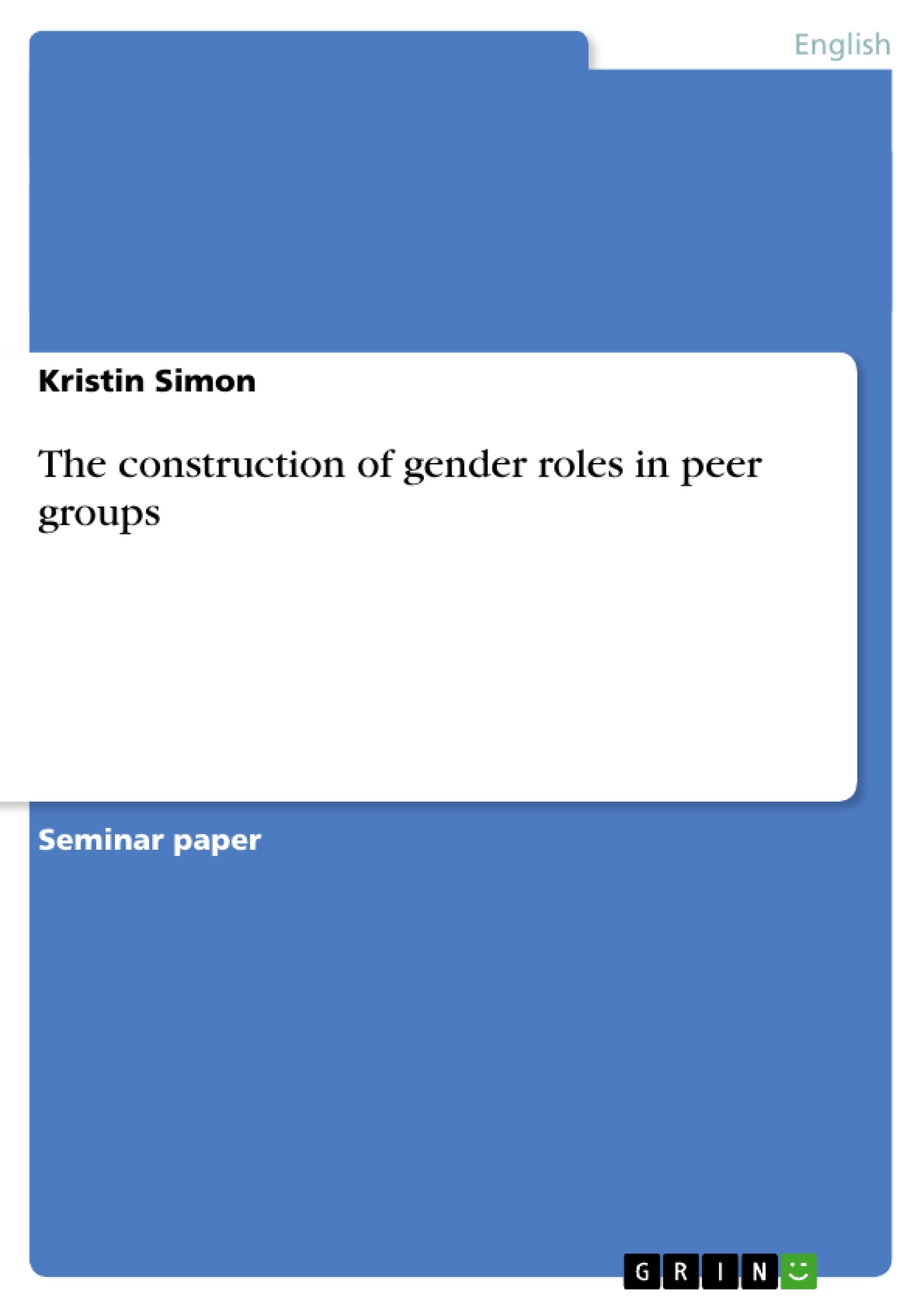Same-sex peer groups are of vital importance for children’s development. There they learn gender appropriate behaviour and language.
In my term paper I want to explain the nature and function of peer groups and examine the language that develops in same-sex and mixed-sex peer groups. The paper will focus mainly on same-sex peer groups, because they are the basis for the differences in the development of girls and boys.
Therefore I organized my term paper the following way: Before I introduce the general concept of a peer group, I want to point out the importance of children for the reproduction of the social order in a particular society. I will also focus the attention on the linguistic significance of peer groups. After that I will sum up the different patterns of behaviour and communication of girls and boys in same-sex and mixed-sex peer groups, which I found in several papers on this topic. Then I will introduce the “Separate World Hypothesis”, which should, according to my thesis, explain the turned up differences. Furthermore I will try to demonstrate difficulties of the hypothesis and give other hypotheses opposing it. Finally I will point out problems which might come up during the study of peer groups.
Inhaltsverzeichnis (Table of Contents)
- Introduction
- Peer groups and language
- Social and linguistic function
- Identification in a peer group
- Peer pressure
- Behaviour and language in peer groups
- Mixed-sex peer groups
- Structure
- Strategies
- Teasing
- Same-sex peer groups
- Structure & activities
- Standard versus non-standard language
- Topics
- Conflicts and problem-solving
- Teasing and exclusion
- Conversational strategies
- Explanations for the choice of same-sex peers
- Comparison of the function of same-sex and mixed-sex peer groups
- Mixed-sex peer groups
- Explanations
- Separate World Hypothesis
- "with-then-apart" arrangements
- Other influences
- Parents
- Culture
- Media
- Conclusion
Zielsetzung und Themenschwerpunkte (Objectives and Key Themes)
This paper aims to explain the nature and function of peer groups and examine the language that develops in same-sex and mixed-sex peer groups. The focus is on same-sex peer groups as they are crucial for understanding the differences in the development of girls and boys.
- The importance of peer groups in the social learning process and the reproduction of societal norms.
- The role of language in conveying gendered behaviors and expectations.
- The distinct patterns of behavior and communication in same-sex and mixed-sex peer groups.
- The "Separate World Hypothesis" as an explanation for observed differences in peer group dynamics.
- The influence of various factors, such as parents, culture, and media, on peer group formation and behavior.
Zusammenfassung der Kapitel (Chapter Summaries)
The paper begins by introducing the concept of peer groups and their significance in children's socialization, particularly regarding gender roles and language acquisition. The focus then shifts to the social and linguistic functions of peer groups, highlighting their role in transmitting societal norms and expectations. The paper explores how children identify with their peers and adopt similar linguistic patterns, recognizing peer groups as sources of linguistic change. It also discusses peer pressure and its impact on conformity in language and behavior, suggesting that boys may face greater pressure to conform than girls.
The paper delves into the specific behaviors and language observed in both same-sex and mixed-sex peer groups. While acknowledging the lack of extensive research on mixed-sex groups, the author summarizes existing findings about male dominance in mixed-sex conversations and the distinct conversational strategies employed by boys and girls.
The paper concludes by introducing the "Separate World Hypothesis" as a possible explanation for the observed differences in same-sex peer groups. It examines the hypothesis's strengths and weaknesses and explores alternative perspectives. The paper concludes by addressing potential challenges in studying peer groups.
Schlüsselwörter (Keywords)
The paper explores key themes related to peer groups, language, and gender. It focuses on the social and linguistic function of peer groups, the role of language in gender socialization, the development of communication patterns in same-sex and mixed-sex groups, and the "Separate World Hypothesis" as a framework for understanding observed differences.
- Citation du texte
- Kristin Simon (Auteur), 2004, The construction of gender roles in peer groups, Munich, GRIN Verlag, https://www.grin.com/document/37656



